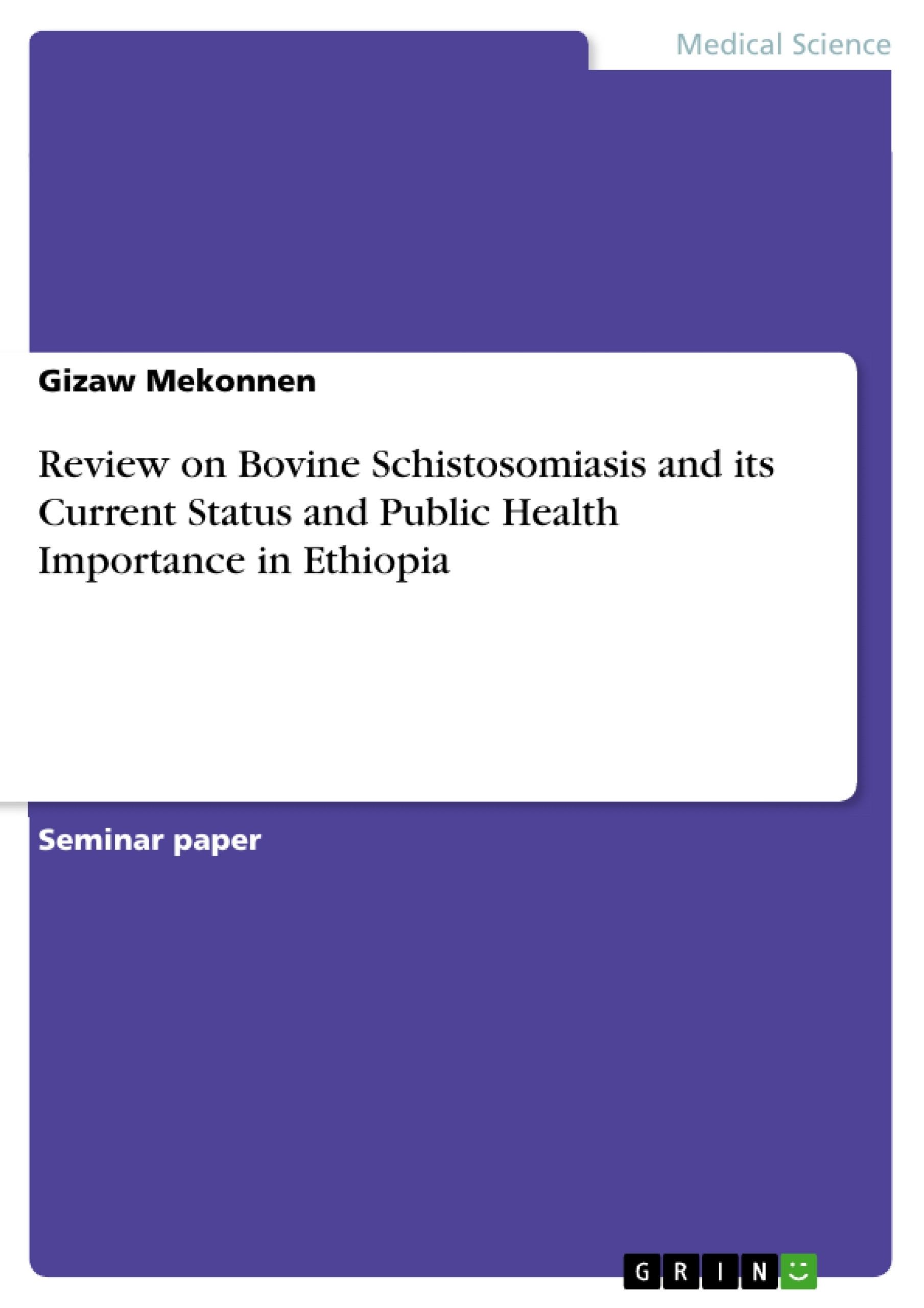Schistosomiasis is a parasitic disease transmitted by snail intermediate hosts. It is one of the most wide spread zoonotic disease which is endemic in many developing countries of the tropics and sub tropics causing considerable loss in humans and animals. The disease affects rural communities particularly those who depend upon irrigation to support their agriculture. Currently it affects between 200 and 300 million people in around 74 countries. The great majority (80-85%) of schistosomiasis is found in sub-Saharan Africa. Schistosomiasis is caused by trematode worms of the genus Schistsoma that live in the alimentary tract, bladder, as well as hepatic and nasal veins of humans and animals.
Effective transmission of schistosomiasis occurs when the schistosome parasites, the aquatic snail hosts and the human or animal definitive hosts meet in space and time in surface water. The pathological changes with the disease are attributed by the adult parasite, cercaria and the eggs of the parasite. Health education, chemotherapy, environmental and biological control as well as provision of clean water have an innumerable role in the control activity of the disease. The use of traditional medicines in the treatment of schistosomiasis are economically important and a growing concern.
There are various types of plants having anti schistosomal and molluscicidal properties with minimal side effects used by developing countries and continuous to be used in the modern world. Phytoplacca dodecandora (Endod) is the most widely studied molluscicide in Ethiopia.
TABLE OF CONTENT PAGE
LIST OF TABLES
LIST OF FIGURES
ABBREVIATIONS AND ACCRONYMS
SUMMARY
INTRODUCTION
2. BOVINE SCHISTOSOMIASIS
2.1 Etiology
2.1.1 Morphology of Schistosoma
2.1.2 Taxonomy
2.2 Epidemiology
2.2.1. Risk factors for infection
2.2.2 Transmission
2.3 Pathogenesis
2.4 Life Cycle
2.5 Clinical findings
2.6 Diagnosis
2.7 Managements Of The Disease
2.7.1 Treatment
2.7.2 Control and prevention
3. PREVALENCE OF THE DISEASE IN ETHIOPIA.
4. ECONOMIC AND PUBILIC HEALTH SIGNIFICANCE OF THE DISEASE.
4.1 Economic Importance
4.2. Public Health Importance
5. CONCLUSION AND RECOMMENDATIONS
6. REFERENCES
- Citar trabajo
- Gizaw Mekonnen (Autor), 2020, Review on Bovine Schistosomiasis and its Current Status and Public Health Importance in Ethiopia, Múnich, GRIN Verlag, https://www.grin.com/document/520670
-

-

-

-
¡Carge sus propios textos! Gane dinero y un iPhone X. -

-
¡Carge sus propios textos! Gane dinero y un iPhone X. -

-
¡Carge sus propios textos! Gane dinero y un iPhone X. -

-
¡Carge sus propios textos! Gane dinero y un iPhone X. -

-
¡Carge sus propios textos! Gane dinero y un iPhone X. -

-
¡Carge sus propios textos! Gane dinero y un iPhone X. -

-
¡Carge sus propios textos! Gane dinero y un iPhone X. -

-
¡Carge sus propios textos! Gane dinero y un iPhone X. -

-
¡Carge sus propios textos! Gane dinero y un iPhone X.

